The Portlester Effigy in 3D
Text and Models by Seán Sourke
Overview
Tomb Effigy (National Monument KD028-040002-)
Located at New Abbey Cemetery, Kilcullen, Co. Kildare, is the double effigy of the founders of the Franciscan Friary that once occupied this site. New Abbey was established here by Roland in 1486 and is situated along the Liffey bank just upstream from the settlement then known as Kilcullen Bridge (to distinguish it from the borough on the hill around the ancient monastic settlement that is now know as Old Kilcullen).
The effigy depicts Roland FitzEustace (c.1430–1496), Baron Portlester, and one of his three wives, reputed to be Marguerite d’Artois. Although carved in mid-relief, many of the finer details have been eroded due to centuries of exposure to the elements. The effigy was originally part of a box tomb.
The Effigy was exposed to the elements, likely since the seventeenth century, and lay in a central position in the cemetery for all of the twentieth century. It was relocated to its current location and mounted in a vertical position in 2001 by Kildare County Council.
Roland was Father-in-law and ally to Gerald FitzGerald (Gearóid Mór), the 8th Earl of Kildare, but was a powerful figure in his own right within the Pale establishment holding a number of the highest ranking governmental positions during his lifetime. With these positions came great wealth enabling him to finance the Franciscan establishment beside the Liffey at Kilcullen Bridge.
A model showing the monument in the context of its surrounds: https://skfb.ly/owzKB
A monochrome model to aid in the visibility of details can be found at the bottom of this page (only 35mb), and on Sketchfab here: https://skfb.ly/6V6pA
NOTE: This model requires good bandwidth and a reasonably powerful computer to view successfully, as the download size is 180MB. Alternatively, you can view images with annotations in the section below the model.
Annotations on the Model
1. 2001 Plaque
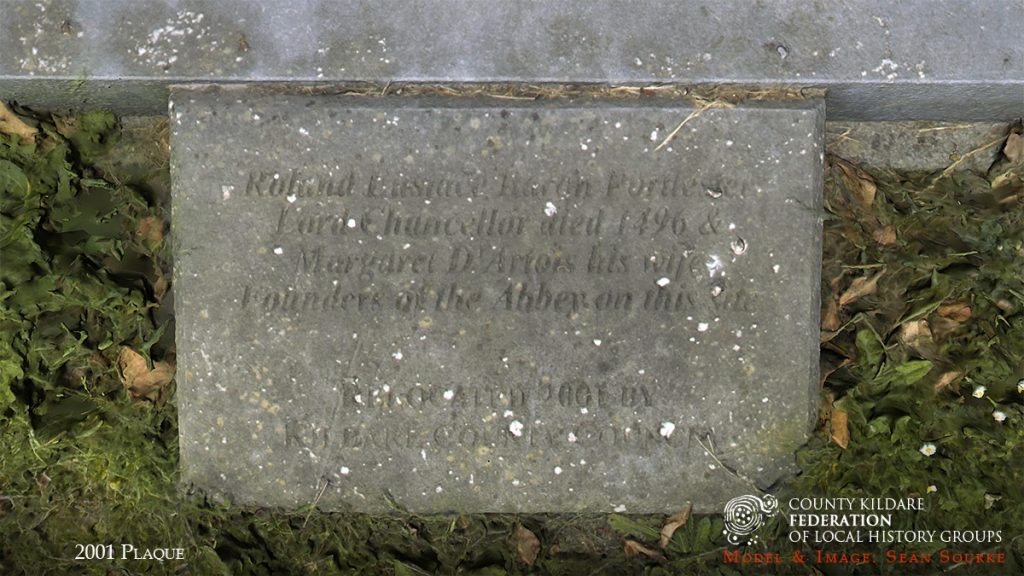
Roland Eustace Baron Portlester Lord Chancellor died 1496 & Margaret D’Artois his wife Founders of the Abbey on this site
Relocated in 2001 by Kildare County Council
2. The Portlester Effigy
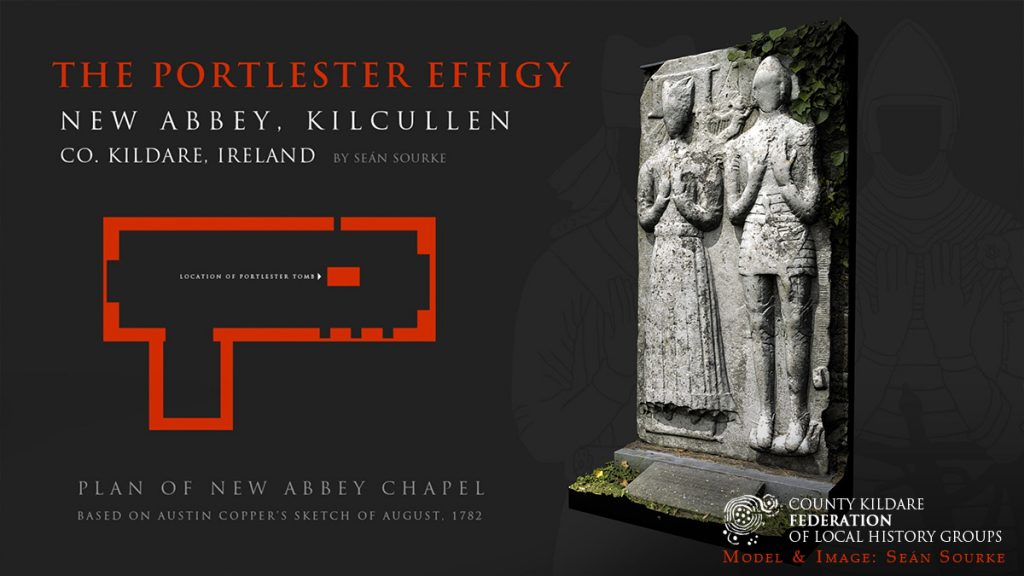
New Abbey was a Franciscan friary founded on the banks of the Liffey by Roland FitzEustace in 1486. The only remains of the friary are this effigy, once part of a box tomb located in the chapel (long since demolished, see plan in the background of the model), some side panels of a box tomb, and fragments of window tracery.
3. Sir Roland FitzEustace
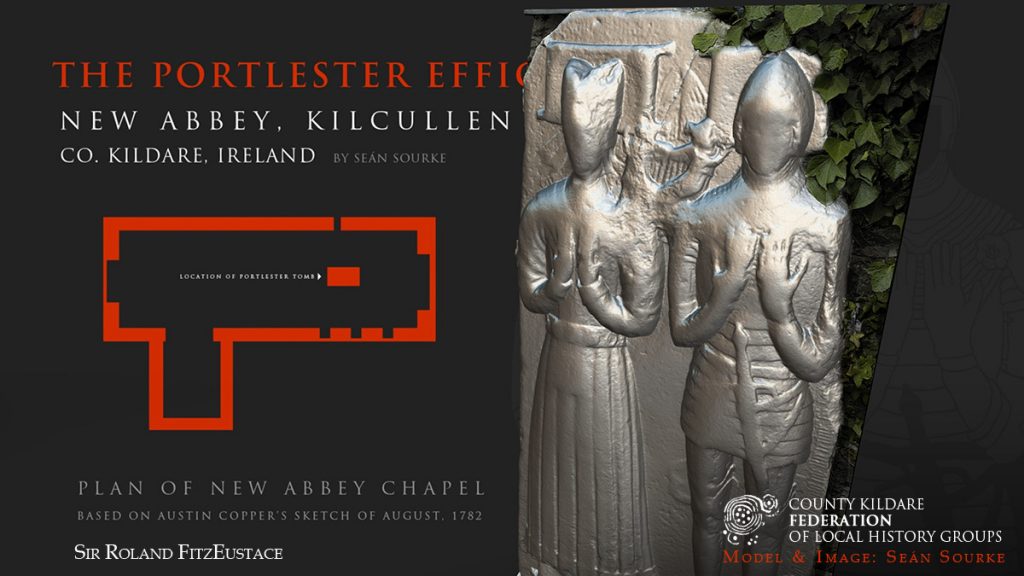
Roland FitzEustace (died 19 December 1496) was Father-in-law and ally to Gerald FitzGerald (Gearóid Mór), the 8th Earl of Kildare, but was a powerful figure in his own right within the Pale establishment holding a number of the highest ranking governmental positions during his lifetime. With these positions came great wealth enablling him to finance the Franciscan establishment beside the Liffey at Kilcullen Bridge.
4. Suit of Armour
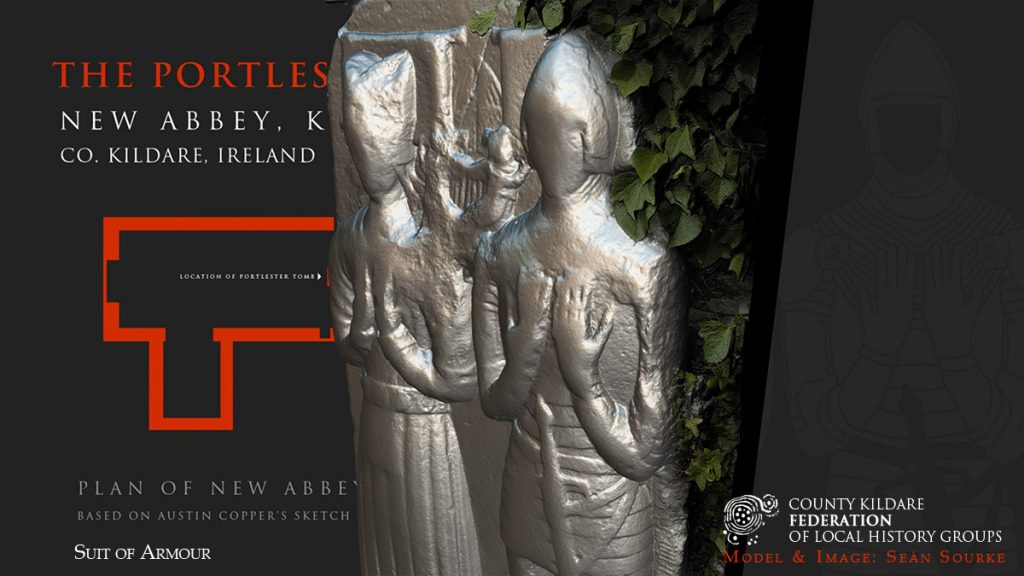
Typical of late Medieval funerary iconography of the aristocracy, Roland is depicted wearing a full suit of armour with a bascinet on his head. This is a conical type of helmet that extends over the ears with a face visor, which is depicted in an upright position.
5. Foot Rest
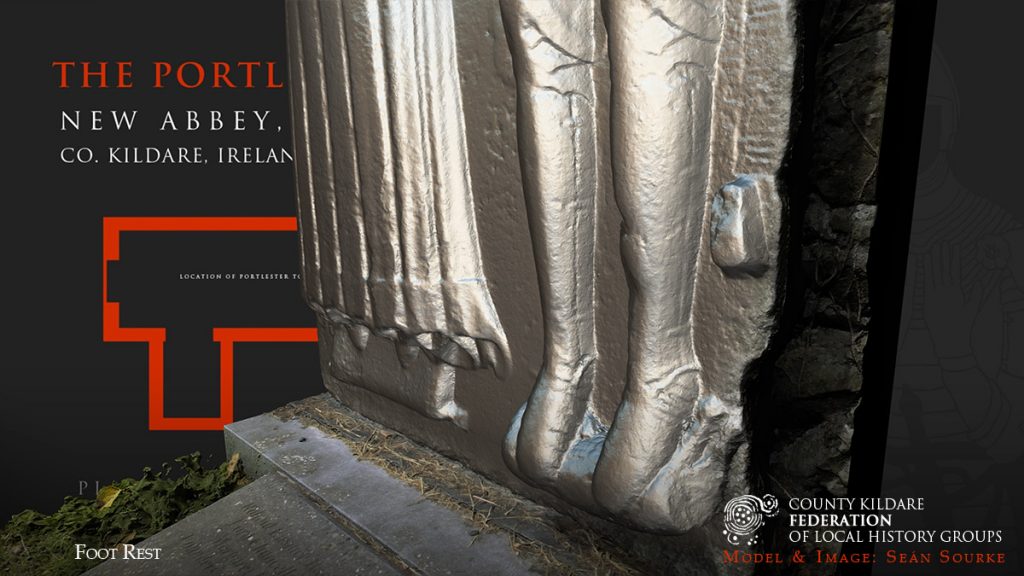
Roland’s feet are resting on a dog, which is another typical motif in late Medieval funerary effigies. The dog’s head is missing due to damage.
6. Medieval Headdress

Roland’s wife (possibly Margaret) is depicted wearing a high-horned bonnet that divides at the crown. From beneath this fall two ribbons on her right side and a long ringlet of hair beneath running along her shoulder. Two ringlets of hair also extend from under the bonnet on her left side.
7. Angels and Pillows
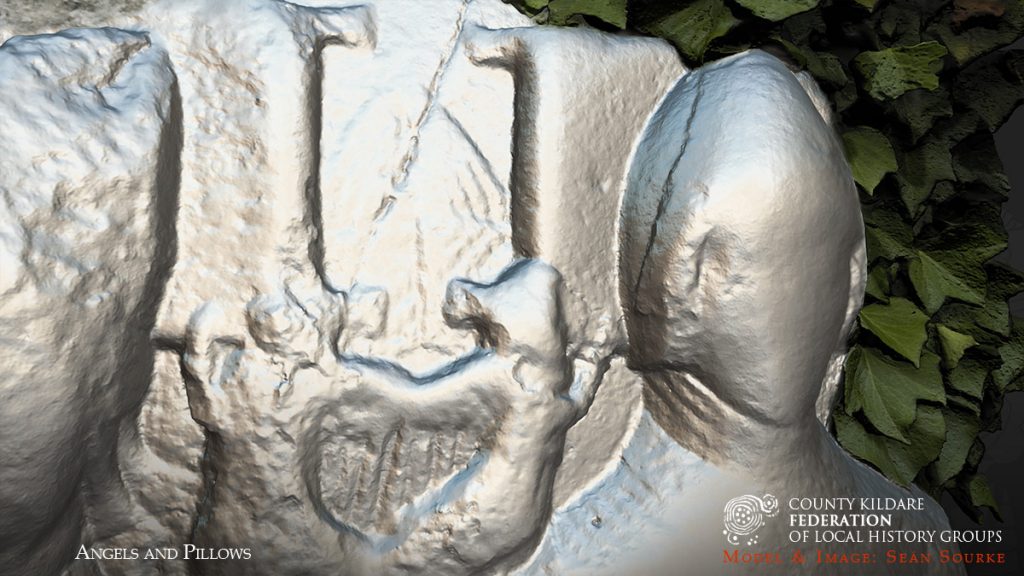
The couple’s heads rest on pillows with corner tassels. Each pillow is supported by an angel, both of which are placed between the couple.
8. Supplicant Poses

Both figures are depicted with their arms bent at the elbow and their hands resting on their chest, palms down, in a gesture of prayer.
9. Dress
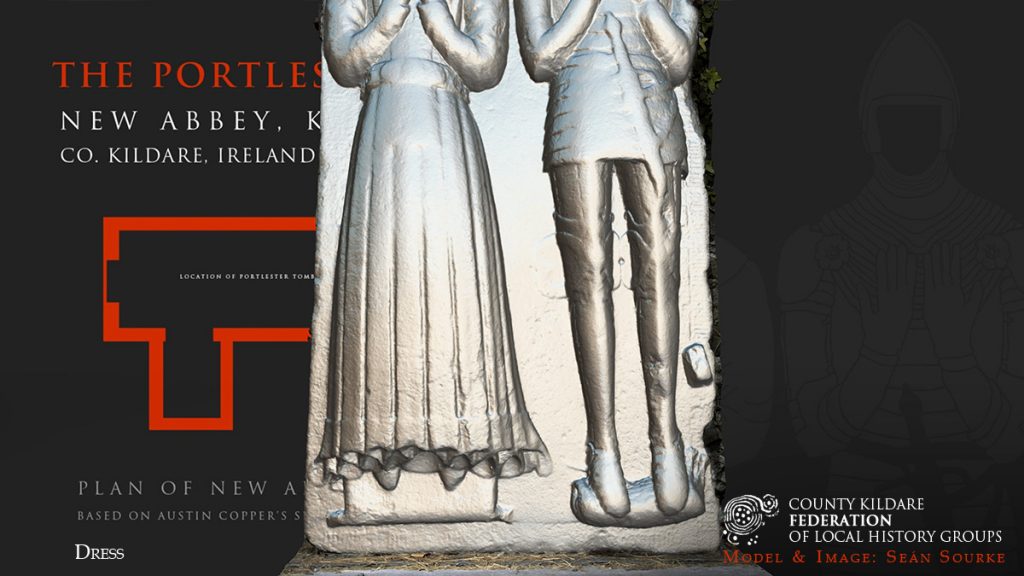
Margaret’s (or possibly one of the other two wives) dress is depicted as being of pleated material and extends from her neck to her feet. It is divided at the waist by a belt with raised floral bosses.
10. Latin Inscription
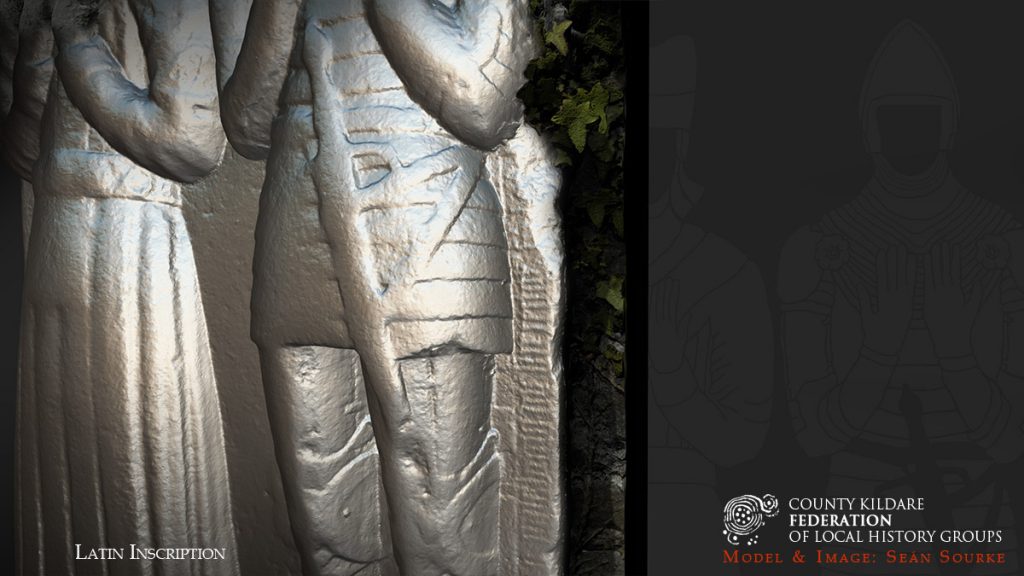
There is a Latin textual inscription in gothic characters running around the remaining perimeter’s top surface – a portion of which can be seen beneath Roland’s left elbow running down the edge of the stone.
The inscription is carved in a style which, even if it were well preserved, would be legible only to a specialist, is nevertheless too damaged and fragmented to be deciphered.
11. Damage
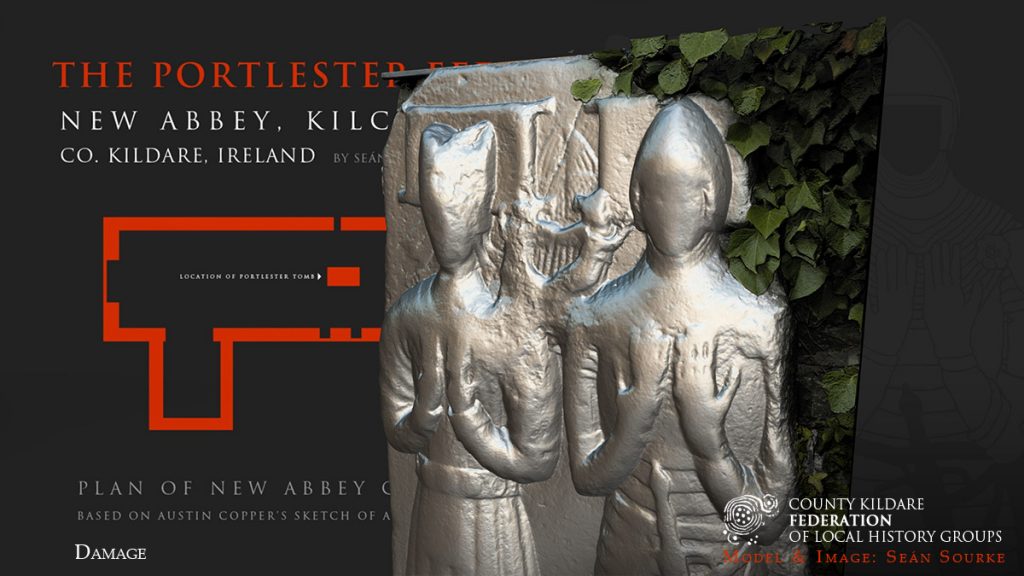
Areas of damage to the effigy include the missing lower portion of Roland’s sword, the head of the animal beneath his feet, and the missing edge extending from Roland’s left elbow to the corner over his head.
The facial features of both figures are completely lost and areas around the hands and upper bodies are significantly worn.
The stone is also extensively covered by lichens.
12. Relocation
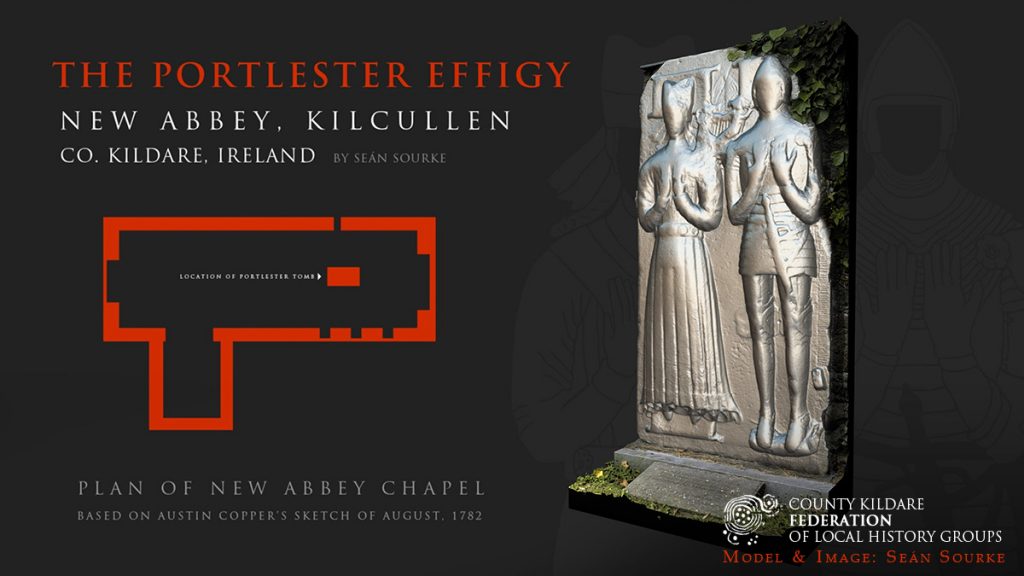
The Effigy was exposed to the elements for centuries. In 1782, when Austin Cooper visited New Abbey, the chapel was a roofless ruin. Following its complete demolition the effigy remained lying in the centre of the cemetery until it was relocated in 2001.
It was then placed in a vertical position against an old stone wall and a new limestone surround with a Gothic arch was constructed to give it some protection from the elements.
A model of the effigy in the context of its limestone surround can be viewed here: https://skfb.ly/owzKB
The Portlester Effigy – Monochrome
An annotated model with the colour removed to aid in the visibility of the remaining details.
NOTE: download size is 35MB.
